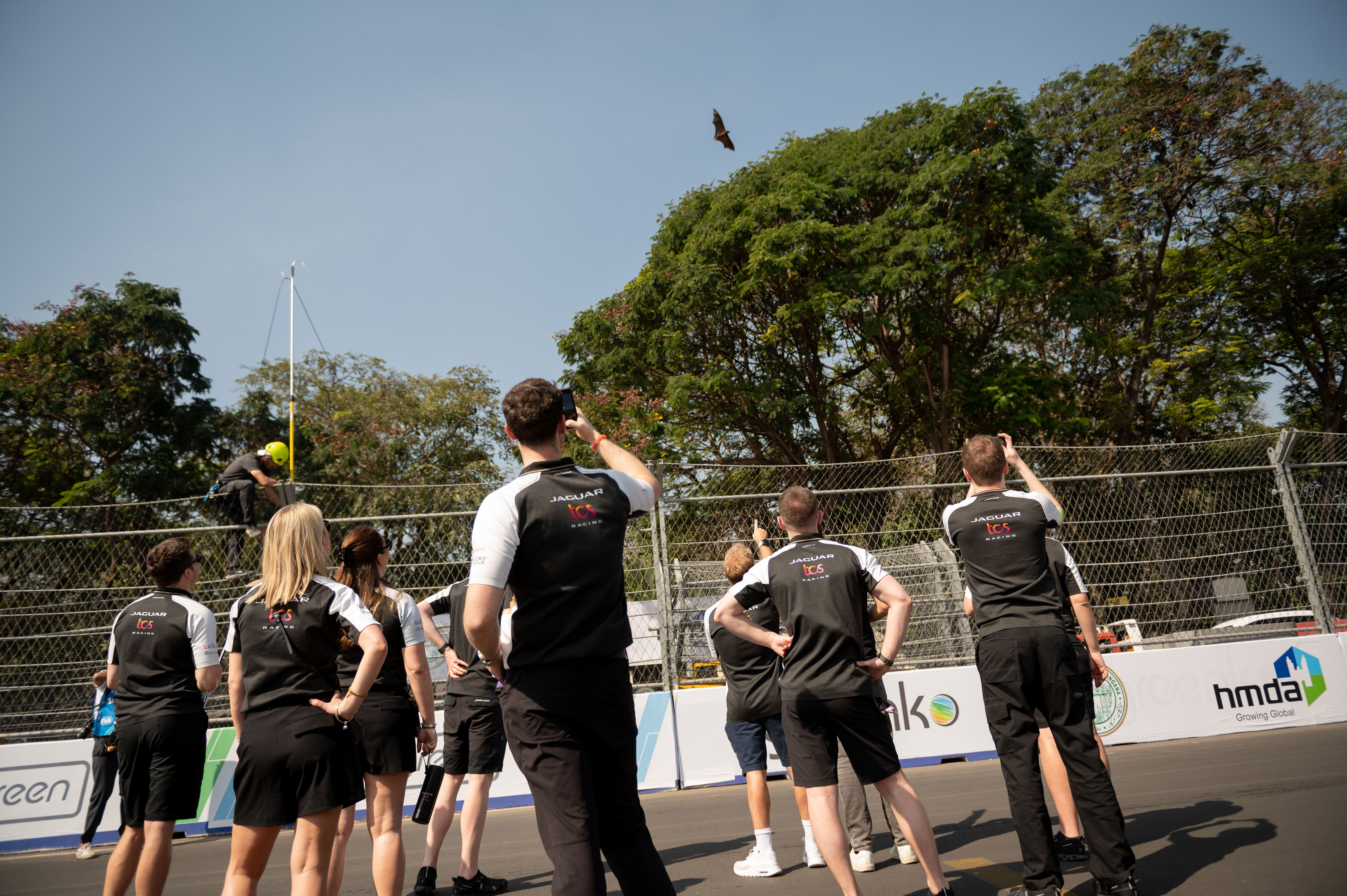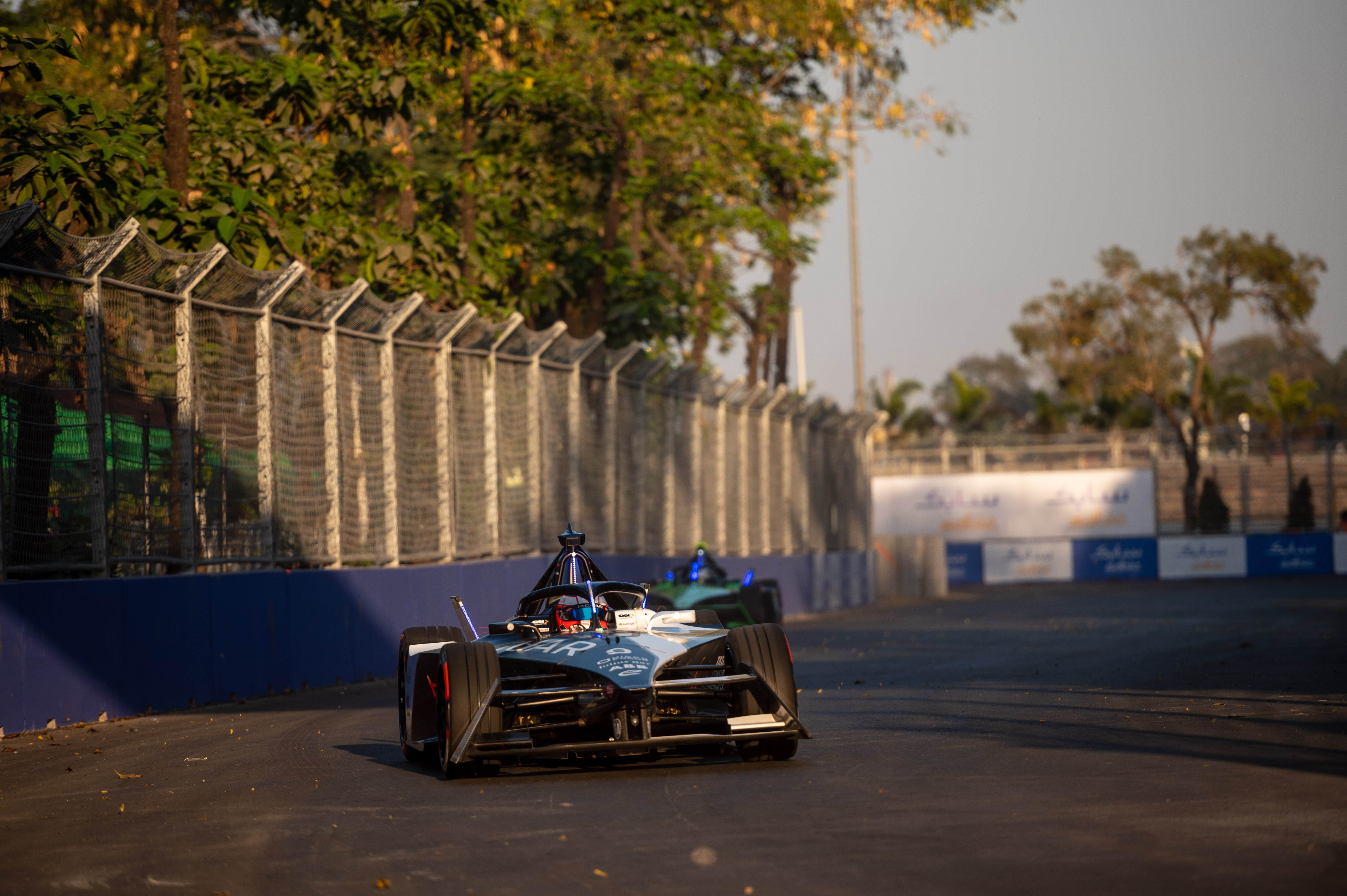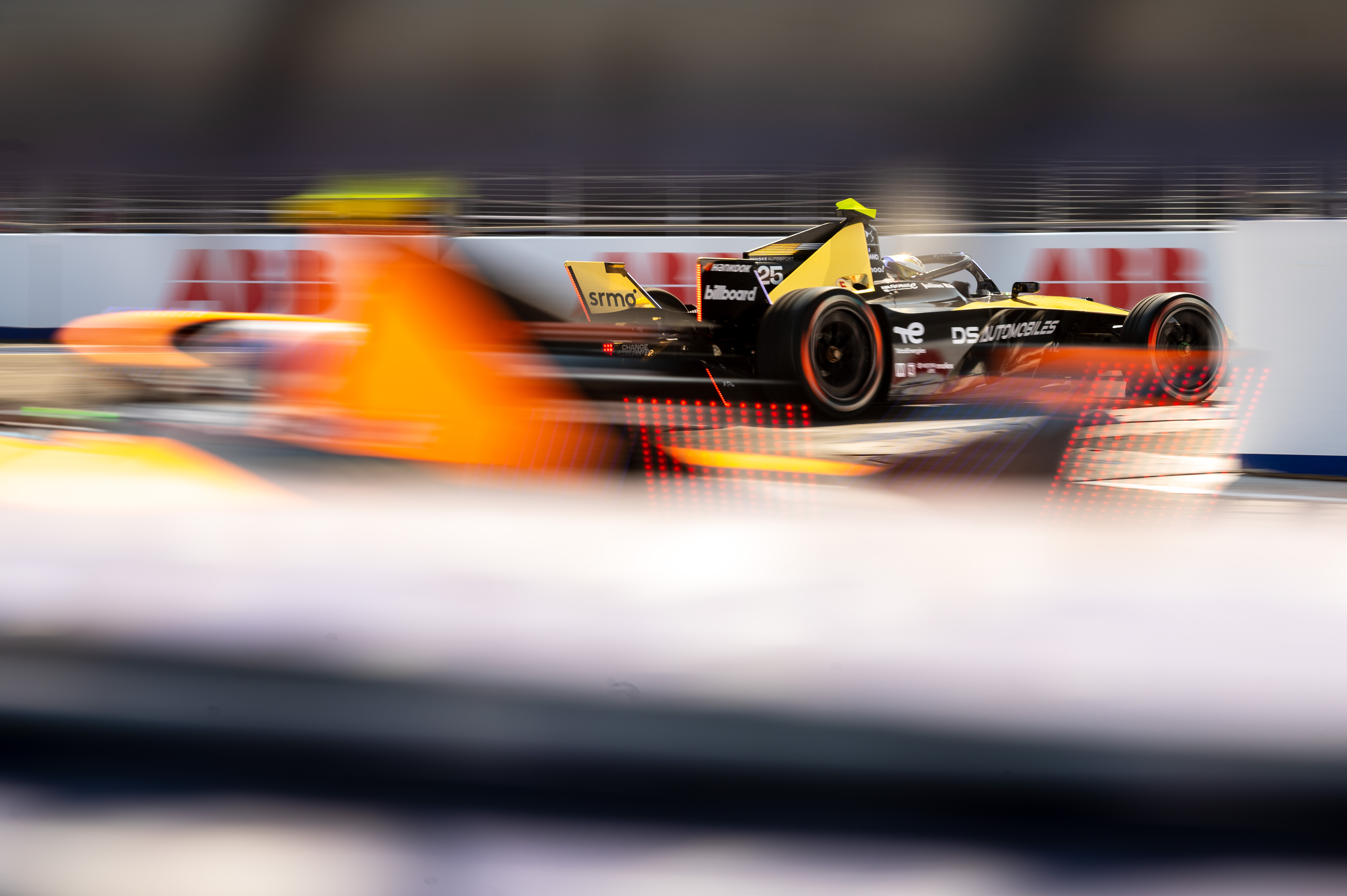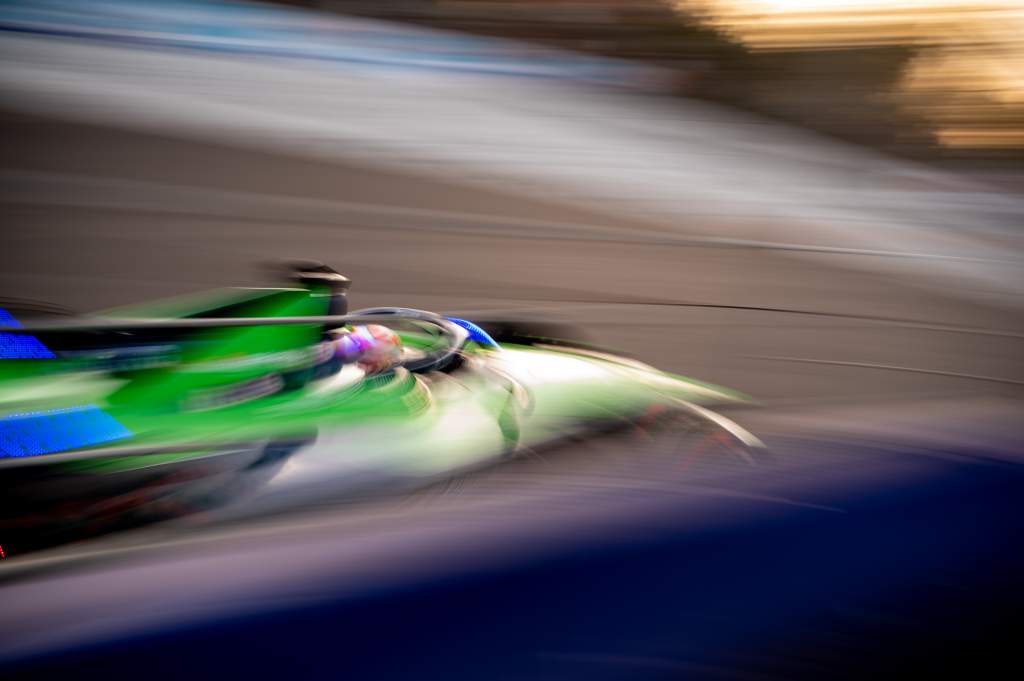It’s sometimes easy for drivers to over-complain about track conditions. A bit of dust here, a lack of rubber there. But Friday’s two Formula E sessions at the inaugural Hyderabad E-Prix redefined a lack of surface grip.
Sand, dust, leaves, cement and, wait for it, bat droppings congealed to create track conditions like no other. Zandvoort in a hurricane might have been preferable.

Track cleaners were deployed between shakedown and FP1, which was much needed. Then the local traffic was allowed onto the track for a while – allowing coughing diesels, pokey Tuk-Tuk’s and all manner of commercial vehicles to lay down a bit of extra lubricant.
Irrespective of the track surface, which was relaid after the delayed Indian Racing League taster event last December, the new Hankook tyres are central to what will happen in qualifying and the race on Saturday.
“It’s the first hot race,” Jaguar’s Mitch Evans told The Race.
“We’re not guessing, because we’re going through a lot of homework to try and pre-empt what it’s going to do, but there’s just not enough data with the car to be able to get it right the first time.
“Obviously, we hope we can. But it’s definitely a very sensitive tyre and that’s not just in terms of getting into its working range, but just driving the car.
“It’s very unforgiving. The lateral side of the tyres is quite weak, and with all this power to try and put it down the working range does seem very narrow – and it was in the Michelin, but it did seem easier to try to manage.

“Come the end of the season, we have a much better understanding, obviously, with all the data. But the tyre does seem to be behaving a little differently on street tracks compared to the private testing that we had throughout the off-season.”
Hyderabad will have one of the highest track temperatures of the season, hotter than Jakarta last June when it peaked at 48C.
Come Saturday afternoon, 50C is expected and this will result in a better-performing tyre in the hotter conditions.
Hankook engineer Mike Choi, who was one of the first engineers to collate the precise chemistry of the Hankook iON product, said he believes that the first high-temperature race of the Gen3 era will give drivers a bigger window to exploit.
“My opinion is that the relatively warmer temperature will open up the range of the tyre, the working range,” Choi told The Race.
“Aiming for the performance in the colder temperature is relatively harder than having a performance target under the hotter conditions.
“Without going too deep into the chemistry, our performance level will be there with the higher track temperature here.

“There’s a lot of things to be applied to designing the constructions of the tyre. Once we’ve fixed the constructions we try to make the right combination where it generates forces and heat into the compound.
“We’re finding the right match up to making and generating constructions of the tyre.”
The big question – one that will only be answered on Saturday – is whether there’ll be a chance for drivers to take advantage of that window, or whether the state of the circuit’s surface means peak performance might be neutralised by the inherent lack of grip.





